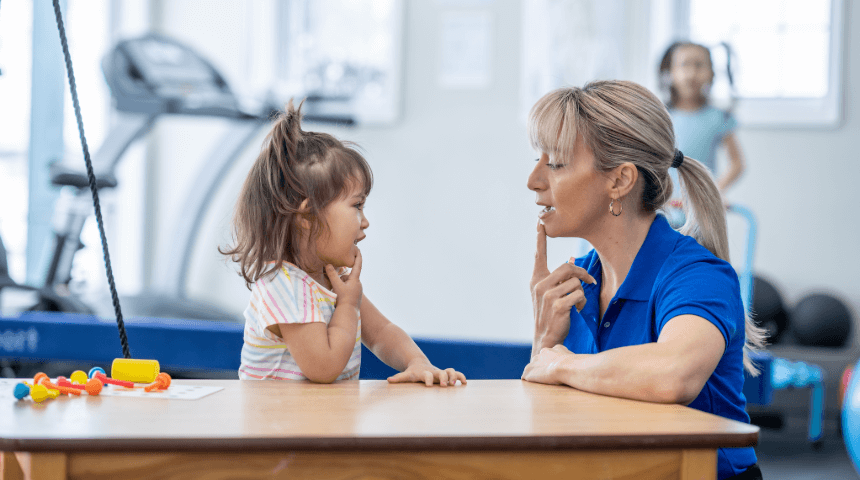10 Ways to Ensure Your Kids Are Ready for the School Year
The start of the school season is upon us! It’s time for parents and caregivers to consider some of the health and wellness issues that arise when kids return to the classroom. By going over a checklist ahead of time, families are more likely to prevent problems rather than having to tackle them later.
Returning to School and COVID-19
While returning to school during the COVID-19 pandemic will be different for your child, it is important to reassure them that simple precautions can help keep them safe. Inquire with your child’s school for information about specific precautions they plan to take and prepare your child accordingly.
Talk to your child using terms and information that are age-appropriate. For young children, it may be sufficient to remind them to wash hands frequently and cover their mouth with their arm when coughing. Older children may have significant concerns about whether they will be safe in school.
Here are key points to discuss:
-
COVID-19 is still new to everyone, so many people may become ill around the same time.
-
Social distancing may be required when returning to school. Remind your child not to hug classmates.
-
Hand hygiene is the single most-important factor in reducing transmission of most viruses. Washing hands frequently helps keep everyone safer from COVID-19 and other contagious diseases such as the seasonal influenza virus.
-
Wearing a mask can help protect your child and others from COVID-19 and other viruses circulating in the community.
If you or your child has questions or concerns, call your pediatrician to discuss plans for returning to school safely.
In addition to studying hard and staying safe, here are 10 back-to-school tips to consider:
1. Talk to Your Child During this Transition Period
Every school year comes with new challenges and experiences. This is particularly true during major transitions, such as graduating or moving to a new school.
It’s important to talk to your child about what to expect and what they’re experiencing. Frequent and open communication is the best way to gauge how they’re handling change. Remember to empathize with their feelings and be mindful that worrying or feeling overwhelmed may be completely normal experiences. After all, major transitions are difficult for people of all ages!
Before life turns hectic with school, take time to evaluate your home environment. Are there any possible stressors, such as family conflict, loss of a loved one, trauma, financial difficulties, mental health or substance abuse issues? All of these may have a significant effect on your child’s mental and emotional well-being and should be addressed immediately.
2. Make Sure Kids Are Up-To-Date on Medical Care
Starting at the age of 3, it’s recommended that every child undergo an annual physical exam. This allows your child’s pediatrician to address any health problems and screen for potential future issues. Children also typically receive vaccines before the start of kindergarten, seventh grade and college. Additionally, we encourage children to receive a flu vaccine each year. Through this preventive approach, parents and medical professionals can work together to achieve each child’s maximum potential.
3. Start Each Morning with a Healthy Breakfast
Did you know that studies show children who consume a nutritious breakfast each morning have increased energy and better concentration in school? If you’re trying to start your family on a healthier breakfast routine, consider transitioning into better eating habits as the school year starts. That means avoiding sugary cereals and greasy fast food. Instead, a healthy breakfast should include a protein, vegetable and/or fruit, and a small portion of carbohydrates.
Check with your child’s school to see if a healthy school breakfast option is available there.
4. Plan Ahead for School Lunches and Snacks
Kids who eat healthy foods during the school day feel more energetic and focused. Remember to plan ahead and monitor what your children are eating. A healthy lunch includes a meat or plant-based protein, vegetables, fruit and a small portion of carbohydrates. Keep in mind that foods are in their most nutritious form when eaten whole, which means avoiding processed foods when possible.
5. Seek out a Well-Fitting and Age-Appropriate Backpack
Choosing a backpack can be an exciting part of preparing for the school year. Make sure to look for straps that are wide and padded, and a bag with a padded back. A proper-fitting backpack sits at the level of your child’s waist and is best worn with a strap on each shoulder to avoid muscle strain. Try to involve your child in selecting a backpack that is fun and personal to their style too!
6. Prepare for a Safe Year of Sports
School sports are an excellent way for kids to engage in physical activity, build character and enjoy healthy social interactions. Before school sports begin, help your child choose sports they’re interested in. Consider the timing of each sport season and aim for a balance throughout the year. It’s also best to research what sort of conditioning is required. In the interest of safety, encourage your child to participate in preseason conditioning through the school or individually.
7. Don’t Forget the Importance of Sleep
Children and teenagers need 8 to 12 hours of sleep each night. The most realistic way to ensure your child gets enough sleep for school is to practice good sleep hygiene throughout the year.
Surprisingly, preparing for a good night’s sleep begins during the daytime. Make sure your kids avoid caffeinated beverages, including tea, dark colas or coffee drinks. Lots of physical activity and limiting screen use throughout the day also are keys to a good night’s rest. Lastly, the use of all electronic devices should be discontinued at least two hours before bedtime. Devices also should be stored in a place where children can’t access them overnight.
8. Create a Homework-Friendly Environment
Homework is an extension of school. A home environment that best mimics a school environment is ideal for helping your child concentrate at the end of the day. Provide a dedicated quiet place in your home where your child has a flat desk or table to sit at and study. This is preferred over their bed or a couch where they may feel too relaxed to remain alert and focused.
9. Limit Screen Time Before and After School
Screen time has become an ongoing battle in many households, starting from a very early age. Know that you’re not alone. If you’re thinking about limiting screen time, you’re already headed in the right direction. While screens may provide a small amount of educational opportunities, for the most part, the negative effects far outweigh the benefits.
Children’s screen time always should be supervised. Use any parental controls and privacy settings available, and closely monitor any social media sites or apps used by your child. As with other healthy habits, implementation is most successful when started early.
When posting back-to-school photos of your child, do not include any personal identifying information. Avoid any information that may help someone to locate your child or steal their identity. This includes the middle and last name, date of birth, school and class or teacher’s name. Assume that anything you post can be hacked or seen by the public. Teach your kids to be careful about what information they share as well.
10. Remember to Celebrate
After you’re done preparing for a new school year, try to enjoy the moment! Plan a celebratory dinner, enjoy some music together or sit down and have everyone list their goals and hopes for the year. Whatever your ritual, we hope your family has a safe, healthy and successful school year.
Choose a Smart Start to a Healthy School Year
Back-to-school season adds a lot of things to a busy parent’s to do list. Don't let a school physical slip your mind during this busy time. Getting an annual physical can help your child stay healthy and ensure a successful school year!











